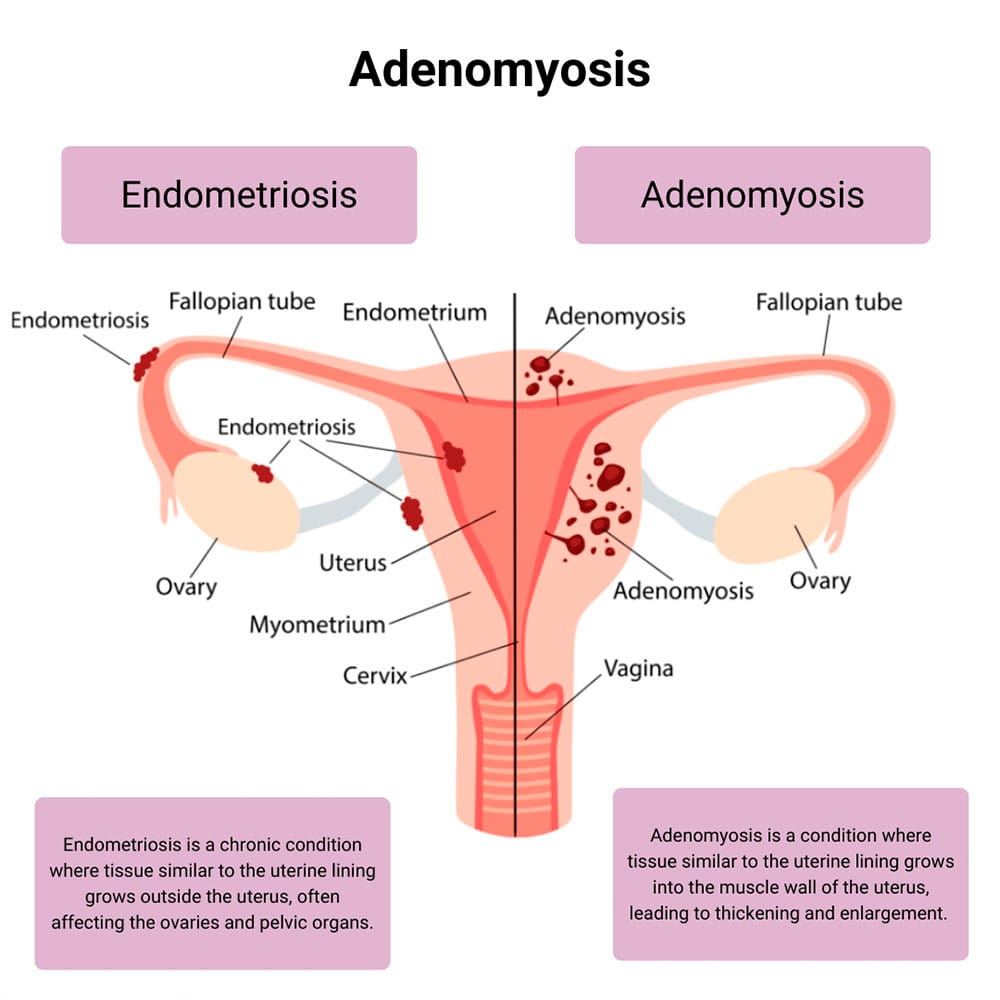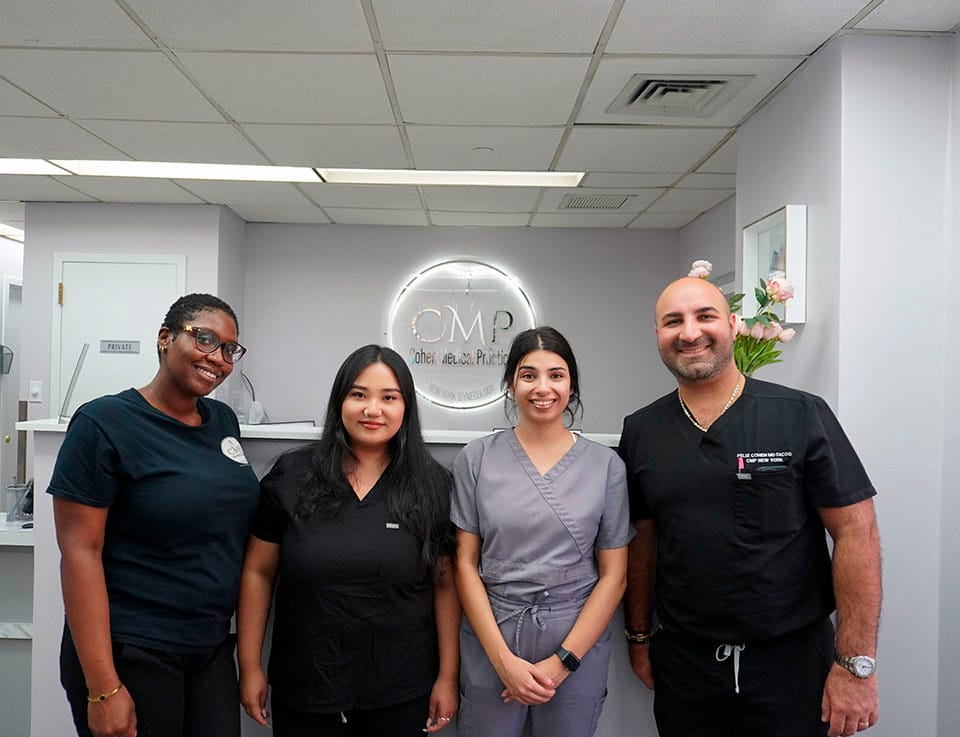What Is Adenomyosis?
An enlarged uterus and heavy, painful bleeding may be signs of a condition known as adenomyosis. In this condition, the endometrial tissue that lines the uterus grows into the muscular wall of the uterus known as the myometrium. In rare cases, this tissue can form into a cyst greater than one centimeter, which is called a myometrial cyst.
Untreated adenomyosis can result in chronic pelvic pain. It may also lead to miscarriage or infertility since this condition may prevent an embryo from embedding in the uterine lining. If you’re experiencing symptoms such as abnormal uterine bleeding, pelvic pain or any other symptoms of gynecological problems, they shouldn’t be ignored. When you’re looking for a Midtown NYC gynecology practice, your best choice is Cohen Medical Practice (CMP).

What Are the Symptoms of Adenomyosis?
Some women with this condition experience only mild symptoms, while as many as a third of women with adenomyosis have no symptoms at all.
Symptoms you may have include:
- Severe menstrual cramps that may become worse over time
- Heavy, prolonged menstrual bleeding
- Bleeding between periods
- Painful sex
- Abdominal heaviness and bloating
- Pelvic pain
- Infertility
Your uterus may become enlarged. You might not know for sure if your uterus is enlarged, but you may notice feelings of pressure or tenderness in your lower abdomen. Symptoms can vary throughout the menstrual cycle because of rising and falling levels of estrogen. After menopause, uncomfortable symptoms usually go away completely because of the natural decrease in estrogen at this time, but the uterus may remain enlarged.
How Is Adenomyosis Diagnosed?
To diagnose adenomyosis, your CMP gynecologist takes a complete medical history and does a pelvic exam. Enlargement of the uterus may be detected or suspected during a pelvic exam, especially if your uterus is tender to the touch.
Other diagnostic tests that may be done include:
- Adenomyosis ultrasound. A transvaginal ultrasound produces images of pelvic organs by using sound waves. Thickening of the uterine wall may be visible in these images.
- Magnetic resonance imaging (MRI). An MRI provides very high-resolution images that show layers of tissue that may have been invaded by endometrial tissue.
- Endometrial biopsy. Tissue from the uterus may be tested to make sure you don’t have a more serious condition. This helps your doctor rule out other possible causes of your symptoms.
In most cases, there’s no connection between adenomyosis and cancer, and adenomyosis is usually a benign condition. In rare cases, this condition may be a precursor to endometrial cancer.
What Are Causes and Risk Factors of Adenomyosis?
The cause of adenomyosis is unknown. Doctors and researchers have some theories of possible causes, which include that it may be a condition present from birth, or it may be triggered by the growth of invasive tissue.
There are some risk factors that increase your chance of developing this condition, such as:
- Age. While adenomyosis can happen at any age in women or in those assigned female at birth, the condition is most often diagnosed between the ages of 35 and 50.
- Previous surgeries. Some studies have shown that having prior uterine surgeries such as a cesarean section makes adenomyosis more likely.
- Pregnancy. There appears to be a link between adenomyosis and pregnancy, since a high number of women with adenomyosis have had multiple pregnancies.
Recently it’s been theorized that adenomyosis could be caused by bone marrow stem cells that invade the uterine muscle. Risks of developing problems involving the female reproductive system can be reduced by seeing Dr. Felix Cohen for annual gynecological exams and cancer screenings.
How Is Adenomyosis Treated?
There are both surgical and nonsurgical options for treatment of adenomyosis.
Nonsurgical treatment options include:
- Birth control pills. Hormonal treatment with birth control pills reduces discomfort and lightens periods.
- Non-steroidal anti-inflammatory drugs (NSAIDS). Taking NSAIDS, such as ibuprofen, reduces pain from cramping during your period and when bleeding continues after your period ends.
- Tranexamic acid. This is a non-hormonal medication that can reduce bleeding during periods.
The only definitive treatment of this condition is a hysterectomy, which is a complete removal of the uterus. This may be a good option for women who prioritize pain relief over pregnancy.
How Do You Compare Adenomyosis vs. Endometriosis?
Many uterus diseases and problems with the female reproductive system have similar symptoms. When distinguishing between adenomyosis vs. endometriosis, the difference involves where endometrial tissue is growing.
With adenomyosis, endometrial tissue grows deep into the uterine muscular wall. When you suffer from endometriosis, the tissue grows outside the uterus. It’s possible to have both conditions at the same time.
An expert in the field of obstetrics and gynecology is needed to pinpoint the cause of abnormal periods or pelvic discomfort. The team at Cohen Medical Practice (CMP) provides a wide range of diagnostic and treatment options for many different gynecological conditions as well as fertility services and treatment of sexually transmitted diseases. Contact CMP today to schedule an appointment.

